






































I’m sitting in a room that reminds me of being in Ghana for the first time in 1994. There was a huge city market called the Makola in the middle of Accra. One section of the Makola was dedicated to art for sale. As you moved more deeply into that space you were overwhelmed by the stunning beauty of these African art creations. The further you went into it, the more stunningly beautiful, the more luxurious, more exquisite, the more creative, the more the genius of African creativity enfolded you. You recognized that you were in and at the seat of creativity. A place where creating and the created reveal themselves as one and the same. It was a divine experience.
That’s the same feeling you get when you come to the Mhiripiri Gallery here at 90th and Penn in Bloomington, Minnesota. How exquisite, how wonderful, how beautiful these works of art are.
I’m pleased to connect with the curator of the Shona

stone sculptures and the artist for the paintings, and gallery owner, Rex Mhiripiri.
Rex Mhiripiri: My wife and I have owned this gallery since 1986. I happen to be a painter, but I show a lot of what we call Zimbabwe Shona stone sculpture. The Shona are a tribe and I am Shona. We are not a small gallery. We are easily one of the largest in Minnesota, the only known art gallery that has built its own building. We have 6,000 square feet of space filled with hundreds of stone sculptures, masks from more than 20 African countries, my own paintings and some paintings by notable African American artists like Ta-coumba Aiken and the late Ken Greene.
You are invited to come here. You don’t have to buy anything. We can sit and talk about so many things. Some are frivolous, some are important. We live on planet earth and this is not a rehearsal. This is the real thing.
My vision is to be where I am now, where the Lord God put me for my

purpose to paint, to spread art, to spend my money not just on myself. There’s a great need there, especially for African Americans to be committed to good stewardship, to share what you have been allowed to have. The more you have been given, the more will be required of you. Welcome to the club.
Al McFarlane: Talk about Zimbabwe… the nation, the culture, the people.
Rex Mhiripiri: There are 50 some countries in Africa. Africa, the real estate is more than three times the size of the United States including Alaska. Zimbabwe is right next to South Africa, which is way south. It is landlocked, it has no sea next to it. It’s between Zambia, South Africa, Mozambique, and Botswana. Zimbabwe has two main tribes, the Shona where I belong, the Matabele, who are an offshoot, if you like, of the Zulu. Zimbabwe used to be Southern Rhodesia, a British colony. And it was named Zimbabwe after the famed Zimbabwe
ruins, which are made of stone, fabulous ruins, which are old. When you look at them, you wonder how the builders cut the stone when they did not have the tools that we have today.
In all of Africa, surprisingly only Zimbabwe is famed for stone sculpture. Some of the artists we carry in our gallery are world famed, have traveled the world. Their work is in places like Melbourne, Australia, Wellington, New Zealand, Christchurch in New Zealand, they are in Holland, in Germany, England across this country in Canada, in Venezuela of all places, Malaysia, Japan. And they are written about in many books, and we have the books here to prove the point. If some of the artists, I carry here, to put it plainly, if they were white, they would not be showing in my gallery. They would be showing in major museums like the Museum of Modern Art in New York, the Rodin in France, and our artists have showed there too. We are not a dime store. We are quite well known in this country and beyond.
The Biden administration announced Wednesday that it is providing $600 million in funding to produce new at-home COVID-19 tests and is restarting a website allowing Americans to again order up to four free tests per household — aiming to prevent possible shortages during a rise in coronavirus cases that has typically come during colder months.
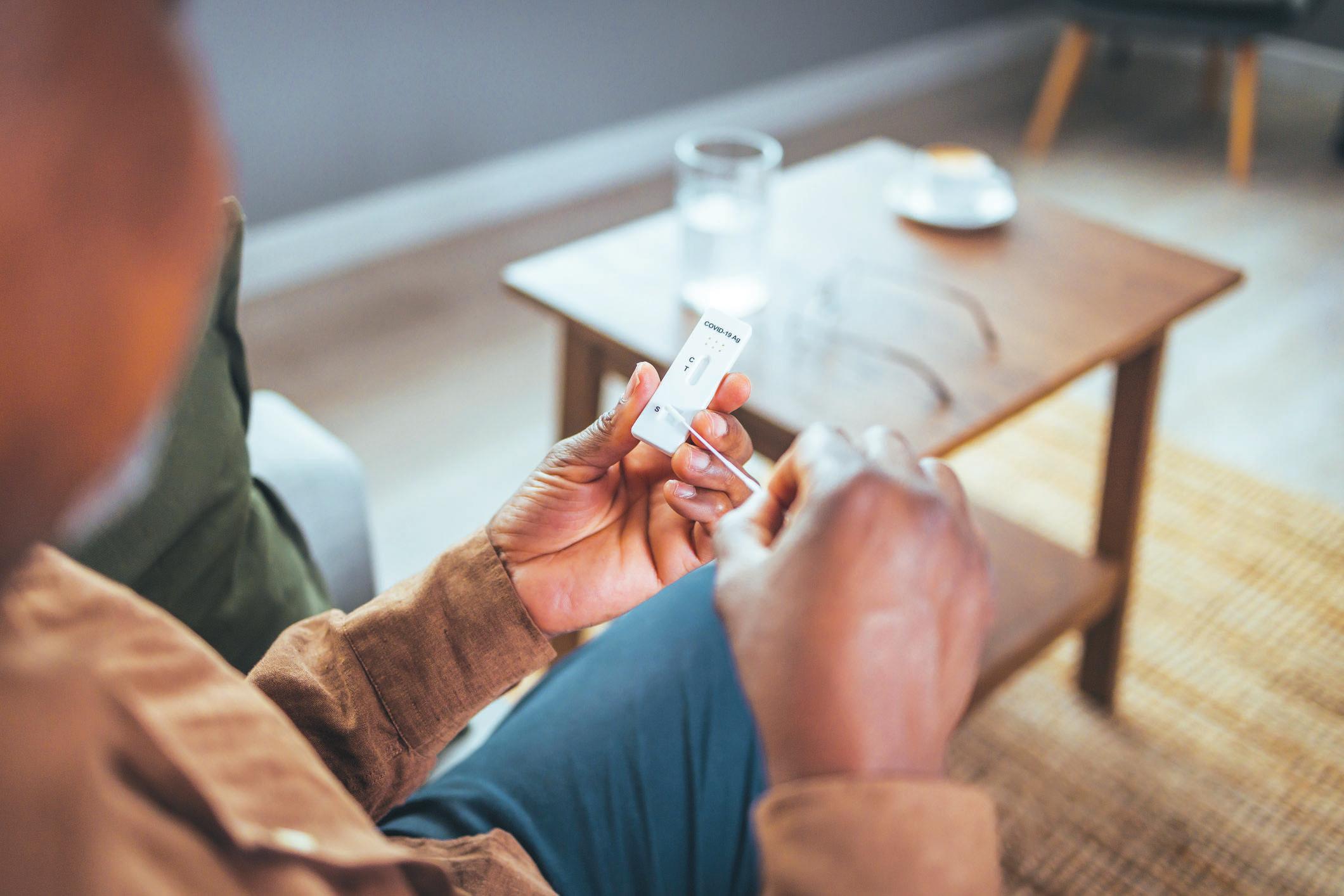
The Department of Health and Human Services says orders can be placed at COVIDTests.gov starting Sept. 25, and that no-cost tests will be delivered for free by the United States Postal Service.
Twelve manufacturers that employ hundreds of people in seven states from California to Maryland have been awarded funding and will produce 200 million over-the-counter tests
 By Colleen Slevin Associated Press
By Colleen Slevin Associated Press
Two Denver-area police officers ignored Elijah McClain’s pleas of “I can’t breathe” when they put the Black man in a neck hold before he was injected with a powerful sedative and died, prosecutors said Wednesday, as a trial began over the 2019 confrontation that became a rallying cry for protests and spurred police reform.
In opening arguments for the first of several trials stemming from McClain’s death, lawyers for the two sides painted contrasting pictures of the fatal struggle after he was stopped by police in Aurora.

Officers Randy Roedema and Jason Rosenblatt approached McClain, a 23-year-old massage therapist, as he walked home from a convenience store carrying only a plastic bag with three cans of iced tea and his phone. A 911 caller had reported him as suspicious.
If prosecutors can convince jurors the stop was unjustified, that would undermine any argument that McClain’s injuries were a result of the
officers just doing their jobs. Roedema and Rosenblatt are both charged with criminally negligent homicide, manslaughter and assault. They have pleaded not guilty but have never spoken publicly about the allegations against them. The trial is expected to last about a month. A third officer and two paramedics are also charged in McClain’s death and are
By Cheyanne Mumphrey and Juan Lozano Associated PressA Black high school student in Texas has served more than two weeks of in-school suspensions for wearing twisted dreadlocks to school. When he arrived Monday with the same hairstyle, he was suspended again, his mother said. Darryl George, a junior at Barbers Hill High School in Mont Belvieu, was initially suspended the same week his state outlawed racial discrimination based on hairstyles. School officials said his dreadlocks fell below his eyebrows and ear lobes and violated the district’s dress code.

George, 17, has been suspended since Aug. 31 at the Houston-area school. He was in tears when he was suspended Monday despite his family’s arguments that his hair does not violate the dress code, his mother Darresha George said. “He has to sit on a stool for eight hours in a cubicle,” she said. “That’s very uncomfortable. Every day he’d come home, he’d say his back hurts because he has to sit on a stool.”

The incident recalls debates over hair discrimination in schools and the workplace and is already testing the state’s newly enacted CROWN Act, which took effect Sept. 1. The law, an acronym for “Create a Respectful and Open World for Natural Hair,” is intended to prohibit racebased hair discrimination and bars employers and schools from penalizing people because of hair texture or protective hairstyles including Afros, braids, dreadlocks, twists or Bantu knots. Texas is one of 24 states that have enacted a version of the CROWN Act. A federal version of the CROWN Act passed in the House of Representatives last year, but was not successful in the Senate. For Black people, hairstyles are more than just a fashion statement. Hair has always played an important role across the Black diaspora, said Candice Matthews, national minister of politics for the New Black Panther Nation. (Her group is not affiliated with another New Black Panther organization widely considered antisemitic.)

6
Officers kept Elijah McClain in neck hold despite pleas of ‘I can’t breathe,’ prosecutors say
5
A Black student was suspended for his hairstyle: The school says it wasn’t discriminationPhoto by Uchec Iroegbu dragana991/iStock Dawn O’Connell, assistant secretary for preparedness and response at HHS, said that though some portions of the public may be tired of the pandemic and its implications, at home-testing remains a key way to slow the spread of new cases. AP Photo/Jack Dempsey Sheneen McClain, mother of Elijah McClain, looks on outside the courtroom at the Adams County Justice Center for the start of a trial of two of the police officers charged in the death of McClain, Wednesday, Sept. 20, 2023, in Brighton Colo.
As National Hispanic Heritage Month is celebrated from September 15 to October 15, more people are recognizing the growing population of Afro Latinos in the United States.
According to information in the report “Centering Black Latinidad: A profile of the U.S. Afro Latinx population and complex inequalities,” the number of Afro Latinos in the United States has developed at nearly twice the rate as the population of non-Black Latinos since the beginning of the century.
The report’s authors, from UCLA’s Latino Policy & Politics Institute, used data from the 2015–2019 American Community Survey (ACS) to evaluate the U.S. Afro Latinx population and look at how far this community has come in terms of education levels, employment, and homeownership.
Their research found that there was a 121% increase in self-identified Afro Latinos from the year 2000 through

2019. They determined that this is a group that tends to be younger than non-Black Latinos: Their average age is 21. And Afro Latinos tend to be able to garner higher education levels than non-Black Latinos, yet they also have higher poverty rates and lower homeownership rates. The discord between high education levels and high poverty rates has a lot to do with the position Black Latinos find themselves in in the United States, according to Dr. Nancy López, a University of New Mexico professor of sociology who is one of the co-authors of the report.
Rarely viewed as a stereotypical Latino and not always seen as epitomizing U.S. Black culture, Afro Latinos stand apart from the two groups they form part of, so they don’t always see the benefits either community is given.
“It’s critical that we employ intersectionality or attention to the idea that race, gender, class, and ethnicity are all analytically distinct,” López told the AmNews. “I’m a Black Latina, a U.S.-born daughter of
“Listen to Elijah’s words,” Bunge said as he replayed police body camera video of the episode. “When Elijah is on the ground handcuffed, he’s saying over and over and over again, ‘I can’t breathe. Please help me.’”
scheduled for trial later this year.
Officials have determined the sedative ketamine played a key role in McClain’s death, which fueled renewed scrutiny about the use of the drug for people considered to be acting erratically and led Colorado’s health department limit when emergency workers can administer it. In 2020, neck holds by police were banned by the state’s Democratic-led Legislature.
Prosecutor Jonathan Bunge said they violated department policies by using excessive force against McClain and failing to deescalate the situation.
From 3
to replenish federal stockpiles for government use, in addition to producing enough tests to meet demand for tests ordered online, the department said.
But Roedema’s attorney, Reid Elkus, said the officers’ actions were in line with police policies and their own training.
“Just because a tragedy occurred doesn’t mean criminality occurred,” Elkus said.
He said McClain was stopped in a “high-crime area,” and that officers repeatedly told him to halt before he complied. “They don’t want to hurt him,” Elkus said.
Elkus added that it was paramedics who arrived on scene and took control over McClain who decided to use the sedative on him.
“After being injected
The new effort is meant to guard against supply chain issues that sparked some shortages of at-home COVID tests made overseas during past surges in coronavirus cases. But it also illustrates the political balance President Joe Biden is trying to strike as he seeks reelection next year between trumpeting his administration having led the country through
Dominican immigrants, and I have people in my family who are not Black, but they’re still Dominicans. So, if we want to practice solidarity, we have to understand that race––and I call it ‘street race’: If you are out in public, what race would you think others who don’t know you would assume you are, based on what you look like––is not the same as ethnicity, which is your cultural background, your genealogical heritage.

“The reason why paying attention to Afro Latinidad is important is because we are making visible any inequalities within our community that follow along racial lines that would obviously remain unseen if we assume that all Dominicans are the same race or all Puerto Ricans are the same race or all Mexicans are the same race.”

Unique issues for Afro Latinos There are some 2 million Afro Latinos in the United States. They have traditionally been merged with the estimated 58.9 million Latinos in the U.S. When Afro Latinos are not separated
with ketamine, that’s when Mr. McClain’s pulse stopped,” he said. “Mr. McClain die because paramedic (Jeremy) Cooper injected him with 1.7, 1.8 times the ketamine for someone his weight and size.”
Rosenblatt’s attorney, Harvey Steinberg, argued that the officers had no choice but to stop McClain after the 911 call. He added that McClain showed “continued resistance” after he was stopped and the officers were forced to respond accordingly.
“Please be fair and don’t allow emotion or sympathy come into it,” Steinberg told jurors. “And don’t let politics enter into this at all.”
Before jury selection could be finalized, Judge Mark Warner talked behind closed doors with attorneys for both sides as well as a man whom the defense struck from the jury pool after he said he’d been racially profiled about a half-dozen times
the worst of the pandemic while also trying to trying to better prepare for the continued effects of a virus that persists.
Dawn O’Connell, assistant secretary for preparedness and response at HHS, said that though some portions of the public may be tired of the pandemic and its implications, at hometesting remains a key way to slow the spread of new cases.
“Whether or not
out and counted, their unique issues are not recognized. When the concerns of Afro Latinos are subsumed under Latinos issues, the significance of their African heritage is denied. The racial hierarchies in Latin America that colonized indigenous people and enslaved Africans are integral parts of the traditions of white supremacy that many Latino migrants bring to the United States. This is one reason there has been a push by U.S.based Afro Latino organizations to counter a proposal to combine race and ethnicity on the U.S. Census. Black Latinos experience the same antiBlackness that other people of African descent do. Women have been sexualized while at work or at school, individuals have suffered constant surveillance due to assumptions of criminality, and discrimination has led to mistreatment.
“Afro Latinos who were raised here, whether or not they were born abroad… we experience anti-Blackness from the minute we step into so many spaces,” said López. But
by police, including in Aurora. The 12 jurors and 2 alternates appeared to be mostly white. Other potential jurors who were removed included a woman who identified herself as Hispanic and said her husband was singled out for arrest in a conflict with white people. Possible jurors removed by prosecutors included the daughter of a police officer who said officers aren’t being supported by society and a former EMT who witnessed people being given ketamine. Charges were not brought for two years after McClain died, by which time a national reckoning had begun over racial injustice in American policing following the murder of George Floyd by officers in Minneapolis.
In 2019, a local district attorney, Dave Young, called McClain’s death
people are done with it, we know the virus is there, we know that it’s circulating. We know, if past is prologue, it’ll circulate to a higher degree and spread, and cases will go up in the fall and winter seasons,” O’Connell said. “Anticipating that that would be true again, or something similar, we want to make sure the American people have these tools.”
O’Connell said the website will remain functional
There are some 2 million Afro Latinos in the United States. They have traditionally been merged with the estimated 58.9 million Latinos in the U.S.
Juanmonino/iStock
history shows that Afro Latinos and African Americans have often formed communities of solidarity that help both groups face racial disparities. “We go to the same schools, we live in the same neighborhoods, obviously there’s going to be community building that way,” López said. “When we talk about Blackness and we don’t think about the cradle of Blackness, in the Caribbean and Latin America, then we are missing an opportunity to create linkages
“tragic” but decided against prosecuting the officers largely because the coroner’s office could not determine exactly how McClain died.
A revised coroner’s report was issued in 2021, relying in part on information from a grand jury investigation. It found the cause of death was complications from ketamine after McClain, who weighed 140 pounds (64 kilograms), overdosed because he received a higher dose than recommended for someone of his size, pathologist Stephen Cina found.
“I believe that Mr. McClain would most likely be alive but for the administration of ketamine,” Cina said.
Cina said he couldn’t rule out whether the stress of being held down by the officers may have contributed to McClain’s death.
Police stopped McClain on Aug. 24, 2019,
to receive orders through the holidays and “we reserve the right to keep it open even longer if we’re starting to see an increase in cases.”
“If there is a demand for these tests, we want to make sure that they’re made available to the American people for free in this way,” O’Connell said.
“But, at this point, our focus is getting through the holidays and making sure folks can take a test if they’re going to see Grandma for Thanksgiving.”
The tests are designed to detect COVID variants currently circulating, and are intended for use by the end of the year. But they will include instructions on how to verify extended expiration dates, the department said.
The initiative follows four previous rounds where federal officials and the U.S. Postal Service provided more than 755 million tests for free to homes nationwide.
It is also meant to complement ongoing federal efforts to provide free COVID tests to long-term care facilities, schools, low-income senior housing, uninsured individuals and underserved communities which are already distributing 4 million per week and have distributed 500 million tests to date, the department said.
O’Connell said manufacturers would be able to
and create solidarity.”
Support our Racial Equity Journalism Amsterdam News is renowned for its reporting of the news of the day from a Black perspective for 113 years.


Donors who choose to give monthly or annually will receive Amsterdam News’ Weekly E-Edition and acclaimed free weekday newsletter Editorially Black delivered by email.

after a 911 caller reported a man who seemed “sketchy.” McClain, who was often cold, was wearing a ski mask and a jacket despite the warm weather. Officer Nathan Woodyard, who is set to go on trial later this year, was the first to approach McClain and was soon joined by Roedema and Rosenblatt. McClain, using earbuds, initially kept walking. Within 10 seconds, Woodyard put his hands on McClain, turning him around. As McClain tried to escape his grip, Woodyard said, “Relax, or I’m going to have to change this situation.” The encounter quickly escalated, with officers taking him to the ground and putting him in a neck hold. McClain suffered cardiac arrest on the way to the hospital and was pronounced dead three days later.
spread out the 200 million tests they will produce for federal use over 18 months. That means that, as demand for home tests rises via the website or at U.S. retailers when COVID cases increase around the country, producers can focus on meeting those orders — but that they will then have an additional outlet for the tests they produce during period when demand declines. She also said that each winter since the pandemic began “as people move indoors into heated spaces” cases rise and added that also “there’s always an opportunity or chance for another variant to come” but “we’re not anticipating that.”
“That’s not why we’re doing this,” O’Connell said. “We’re doing this for the fall and winter season ahead and the potential for an increase in cases as a result.”
HHS Secretary
Xavier Becerra said that the “Biden-Harris Administration, in partnership with domestic manufacturers, has made great strides in addressing vulnerabilities in the U.S. supply chain by reducing our reliance on overseas manufacturing.” “These critical investments will strengthen our nation’s production levels of domestic at-home COVID-19 rapid tests and help mitigate the spread of the virus,” Becerra said in a statement.
“Dreadlocks are perceived as a connection to wisdom,” Matthews said. “This is not a fad, and this is not about getting attention. Hair is our connection to our soul, our heritage and our connection to God.”
In George’s family, all the men have dreadlocks, going back generations. To them, the hairstyle has cultural and religious importance, his mother said.

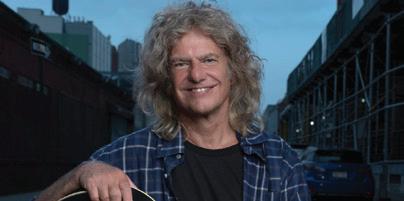
“Our hair is where our strength is, that’s our roots,” Darresha George said. “He has his ancestors locked into his hair, and he knows that.”
Historians say braids and other hairstyles served as methods of communication across African societies, including to identify tribal affiliation or marriage status, and as clues to safety and freedom for those who were captured and enslaved.
After slavery was abolished, Black American hair became political. Although the Civil Rights Act of 1964 banned discrimination on the basis of race, color, religion, sex and national origin, Black people continued to face professional and social stigma for not adopting grooming habits that fit white, European beauty standards and norms.


The issue of racebased hair discrimination in the workplace has long existed alongside concerns in public and private schools. In 2018, a white referee in New Jersey told a Black high school wrestler to cut his dreadlocks or forfeit a match. Viral video of the wrestler having his hair cut with scissors as the crowd watched prompted the referee’s suspension and spurred passage of the state’s CROWN Act.
Darresha George said her son has been growing his dreadlocks for nearly 10 years and the family never received pushback or complaints until now. When let down, his dreadlocks hang above his shoulders but she said he has not worn his hair down since school started in mid-August. George said she couldn’t understand how he violated the dress code when his hair was tied on top of his head.
“I even had a discussion about the CROWN Act with the

principal and vice principal,” she said. “They said the act does not cover the length of his hair.”
Barbers Hill Independent School District prohibits male students from having hair extending below the eyebrows, ear lobes or top of a t-shirt collar, according to the student handbook.
Additionally, hair on all students must be clean, well-groomed, geometrical and not an unnatural color or variation. The school does not require uniforms. The school previously clashed with another Black male student over the dress code. Barbers Hill officials told a student he had to cut his dreadlocks to return to school or participate in graduation in 2020, which garnered national attention. Greg Poole, who has been district superintendent since 2006, said the policy is legal and teaches students to conform as a sacrifice benefitting everyone.
“When you are asked to conform ... and give up something for the betterment of the whole, there is a psychological benefit,” Poole said. “We need more teaching (of) sacrifice.”

Nearby districts have less stringent policies in place. For example, Poole noted others allow students to wear jeans with holes in them, while Barbers Hill does not. He said parents come to the district because of its strict standards and high expectations, which he credits for the district’s academic success.
Attorney Allie Booker, who represents the family, said the school’s argument doesn’t hold up because length is considered part of a hairstyle, which is protected under the law.
“We are going to continue to fight, because you can’t tell someone that hairstyles are protected and then be restrictive. If style is protected, then style is protected,” she said.
Darresha George said she and her son refuse to conform to a standard set by someone who is uncomfortable or ignorant.
“My son is wellgroomed, and his hair is not distracting from anyone’s education,” Darresha George said. “This has everything to do with the administration being prejudiced toward Black hairstyles, toward Black culture.”
The district defends its dress code, which says its policies are meant to “teach grooming and hygiene, instill discipline, prevent disruption,
avoid safety hazards and teach respect for authority.”
George’s situation has drawn solidarity from young Black people around the nation, who say they have long dealt with discriminatory dress codes and comments from adults about their hair.

“When I was in fifth grade, I had a teacher tell me that my blue hair, my pink hair, was unnatural and too distracting for the other students in the class,” said Victoria Bradley, 19, who lives in Detroit. Michigan passed the CROWN Act into law this year.
Bradley, whose hair is braided and currently dyed multiple colors, said she attributes a lot of her hair confidence to her mother, Bernita Bradley, a longtime hair stylist and director of parent voice for the National Parents Union.
Bernita Bradley said her first introduction to the CROWN Act was in 2021, when a biracial, 7-year-old girl in Michigan had her hair cut by a school worker without her parents’ permission. The girl’s father, Jimmy Hoffmeyer, filed a $1 million lawsuit against the school district, alleging racial discrimination and ethnic intimidation. The lawsuit was settled earlier this year.

“That was modern-day scalping of this Black child,” Bradley said.

This is Darryl George’s first year at Barbers Hill High School. Last year, he went to a school in nearby Baytown, Texas, where he had no problems wearing the same hairstyle, his mother said. Darresha George said they recently moved to the Mont Belvieu area for personal reasons.
The family was told they need to schedule a meeting with the principal, Darresha George said.
After the suspension, “his grades are suffering, which also means he is not able to play football or participate in any extracurriculars,” Darresha George said. “He was on track to graduate early, and now he is falling behind and will have to work double time just so he can still graduate.”
Mumphrey reported from Phoenix.

The Associated Press education team receives support from the Carnegie Corporation of New York. The AP is solely responsible for all content.
PIETA BROWN w/ special guest Chama Devora SUPERLATIVE INDIE-FOLK
OCT 5
DEE DEE BRIDGEWATER & BILL CHARLAP INCOMPARABLE JAZZ MASTERS

OCT 7
LUCIA MICARELLI & LEO AMUEDO VIOLIN & GUITAR DUO

OCT 9
NELLIE MCKAY BRILLIANT WITTY & ORIGINAL
OCT 11
MARTIN SEXTON BELOVED SINGERSONGWRITER
OCT 13
GZA & THE PHUNKY NOMADS PERFORM LIQUID SWORDS
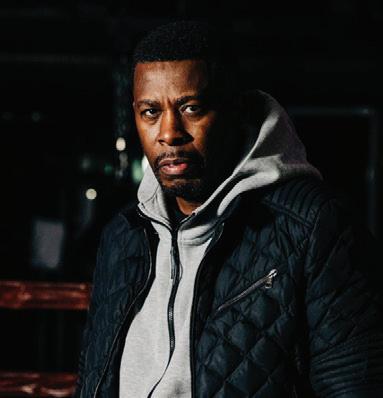
OCT 6
SOUTHSIDE ACES: A NIGHT IN NEW ORLEANS TRADITIONAL JAZZ LUMINARIES


OCT 8
SCOTTIE MILLER BAND SWAMPY & SOULFUL

OCT 10

DAMIEN ESCOBAR: VICTORY LAP TOUR THE KING OF STRINGS
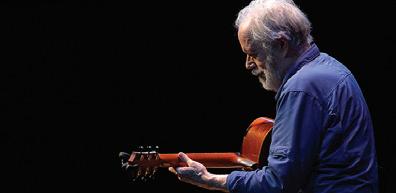
OCT 12
TURN TURN TURN w/ special guest Molly Dean POP-INFUSED AMERICANA


OCT 14

The country of Zimbabwe contains 15 million people at last count. The majority of the Mashona, the Shona, they speak a Shona. It is a wealthy country. It’s known to have more than 25% of all the diamond deposits in the world. It has gold, it has chrome. Its problem, I’m ashamed to say, is management. What good is it to be very wealthy and to be a poor manager of your wealth? That is the problem with Zimbabwe. There are many bright young men and women with college degrees who are unemployed, who panhandle for a dime. It’s sad to say change is coming but very slowly.
Al McFarlane: What life was like before the Europeans came to Zimbabwe? The prevailing European story is that they “discovered” underutilized and improperly engaged people and assets and they brought order and civilization. My question is what will Zimbabwe, Africa, be, a generation or two or five from now, as the young people you’ve described who have degrees find their way into exercising their gifts and their talents for their own personal and family development and therefore for the development of nations?
Rex Mhiripiri: I personally am cold eyed about history. I know the history of this country well, better than most Americans because people don’t like to read. I also know the history of my own country. Zimbabwe, like Kenya and India and Ghana and Congo and South Africa were colonies of Great Britain, of Belgium, of France. There is a mentality in the human race, Black and white of wanting power, of wanting to colonize. My own attitude, and I’m a Black man, look at me real good, of the fact that mismanagement, the greed for power, the abuse of power, it is not entirely European alone. Let’s not take this victim mentality and prevent ourselves from striking out. But the fact still is there that colonizers did a great harm to many parts of Africa. But the crazy effect is they also brought, let’s call it civilization, let’s call it education, let’s call it cities and the freeways and businesses and money. Were it’s not for the colonizers, I would not be speaking to you today. I went to fine schools which were taught by white people in Zimbabwe itself. I went to fine schools in this country and of course most of my teachers were white. I also went to fine schools which were taught by Black people. Before all this happened, I’m going to say we were very tribal in Zimbabwe. Most real estate, most property, was communally held. People did not own land. It was owned by families, by clans so to speak, but we had our own wars. The Matebele, the Mashona hated each other and we fought and we killed each other. We didn’t need white people to help us kill. We did it ourselves. And the shame on us is that we are still doing it.
Al McFarlane: Today?
Rex Mhiripiri: Today in the Sudan, the Sudanese are not killing white people, they’re killing each other. In Somaliland, if you want know what mayhem means, go to Somalia and watch your back. Kenya has settled down. I lived in Kenya for almost 10 years and when I went there at first, the Mau Mau revolution that gave the white-ruled Kenya to the Black people was just ending. I cannot mention to you what the Kikuyu did, both to those whom they considered Uncle Toms and to the white men against whom they fought. They did things that are not mentionable, but Kenya is now a free country ruled by Black people. What is the hope for Zimbabwe? Sometimes history does not repeat itself, but the hope is that the majority of the people who are not stupid will finally find a way to get rid of the elite who are Black, who are
mismanaging their country and robbing it. Let me use strong language here. One does not rape his own mother. That’s what it means when people steal from their own land. So, what do we do? People are waking up to the fact that they can stand up to looking for a future for their children so they can leave legacies of fine buildings. The white man has taught us to build bridges and make roads and hey, everybody learns from everyone. The white men learned a lot of art from us. Welcome Picasso. My hope for my own country is that it will wake up and work hard. The resources for prosperity are there. I must confess that I’m a follower of Jesus Christ, sorry. And I believe I could be wrong, even Paul, my favorite writer of the Bible actually said there is a chance that we could be wrong. That if we Christians are wrong, then we are the most pitiable human beings on earth. We have been deceived. Problem is we believe we have not, and I believe that without the help of God, my country is sunk, so is every other country on planet earth, but I could be wrong. You believe what you believe and that is what I believe and in my work, in my gallery, that’s my attitude. My attitude is that I don’t belong to myself.
Al McFarlane:
I’ve read about that people don’t want to believe that the stone cities Zimbabwe could have been built by Black people.
Rex Mhiripiri:
It’s now common knowledge that the natives of Zimbabwe, Africans of Zimbabwe, the Mashona of Zimbabwe built the Zimbabwe Ruins. Its form is very African
and it is known that some have wanted to claim that this was done by white people from outside, by the-
Al McFarlane: Or from outer space even.
Rex Mhiripiri: Well, if they’re from outer space, that’s what we commonly call nonsense. But now no one even dares to publicly say the Zimbabwe ruins were not built by Africans themselves. They did. The Mashona, over the years, have been known to be carvers of rock. And I have pictures in my gallery of carvings in stone in the Zimbabwe ruins that were made hundreds of years ago and some of them have been looted into museums in Europe and some are now being returned to their rightful place.
Al McFarlane:
What’s the Mashona creation story? What is the mythology? How did the Mashona even predating the Christianity explain the creation of the Mashona people or human beings of the earth?
Rex Mhiripiri:
I am going to go slightly north, then center and Southern Africa. In Europe, the Portuguese, the Belgians and the Italians belong to a group. Those in Sweden and Denmark and Finland belong to a group. Those in England and Scotland and Germany belong to a group. Back to central, slightly north and Southern Africa, there are groups of people, the predominant group is called the Bantu. Bantu means human beings. This group of people, you can distinguish them by the
roots of their language which are common. For instance, Uganda is mostly Bantu, Kenya has got Bantu, Zimbabwe is all Bantu. Tanzania is all Bantu. Example of language, the Baganda speak Luganda, they live in Uganda. The Mashona, there we go, the ba and the ma are the same. The Zulu are also Bantu. And when you look at their languages, you’ll find some words that have got a certain commonality. It is out of this commonality, part of which Swahili is made of. You find some of the same roots of words. Swahili is Bantu plus Arabic. Okay. What is the next group of people? They are called Nilotics and they surround Lake Victoria, they go slightly north towards the Sudan and they go slightly to the east of Uganda. And one of the main tribes in that group are the Luo of Kenya, opposed to the Kikuyu of Kenya who Bantu.
Al McFarlane: Kikuyu being the majority?
Rex Mhiripiri: The Kikuyu are the majority in Kenya. If we went to Zambia, we will find, again, the Bantus. So, here’s the deal, A person who speaks Italian will speak Portuguese before you can. In the same way that a person who speaks French will speak Italian before you do. A person who speaks Shona like I do, has a head start over you if you are in Uganda and you want to speak Luganda because the root forms of the words are similar to my own language.
Al McFarlane: So, the creation story, how do the Mashona say the world was created and do they
elephants, which I know I am going to have to brag and say more than most people has been very profitable for me. I’ve painted elephants until they come out of my ears. I paint Minnesota landscapes. I paint giraffes and rhinos. I love birch trees. I love water by the lake. By the lake is not just for the white man, uh-uh. It’s nice to go and fish for everyone and I love to go and catch a nice big salmon, get photographed with it and brag. There is one of my elephants right there. Kenya is famed for its wildlife. Don’t be deceived by the talk of endangered species. There are some folks out there who make money by talking. The elephant is doing extremely well in Africa, take it from me. So much so there is a word called culling. Culling is done in Minnesota when white-tailed deer so proliferate that they go to the airport, they go to for Snelling Cemetery, they climb over fence and put the airport in danger by going on the runways. And soldiers and marksmen and the National Guard, they have to go and take them out. It’s called culling. It’s not cruel. In Africa, elephants have to be culled because they’re multiplying like crazy and they have to be taken out. Not old ones, but men, women and children, they’re taken out by the group. Funny story about elephants is that they’re like people. They don’t mix. If you belong to a herd, you don’t come to my herd. If you have been separated from your herd and you come to my herd, you are considered a foreigner and we will take you out. People tell many stories about elephants, like when one elephant dies, they come to mourn. You hear them growling in the dirt and making noises and trying to pick up the dead one. But I don’t really equate elephants with people, they are animals and we’re not. Few artists, paint for the heck of it continuously. Few artists paint because it’s such a good thing to do. It’s a job. We paint to make a living. Few artists paint to please God. We all please God by whatever work we do. I don’t paint to please God, but I hope God is pleased by the fact that I have the talent to paint. So, African animals are interesting to look at. People traveled Africa and for miles and spent thousands of dollars to look at rhinos, so I paint them for them, to look at elephants, so I paint them, to look at giraffes, I paint them. I have painted black bears and the brown bears. I painted fish and I paint to sell work to you.
Rex Mhiripiri:
see themselves at the center of creation?
Rex Mhiripiri: I’m going to say no. The Mashona actually believe in God. We call God, Mwari and we believed that this God was up there somewhere and that you could actually talk to this God and ask for help. My grandmother died maybe 20 years ago when she was in her 90s and she told stories of a family that was hungry and they went under a tree and asked Mwari to help and the food was placed in front of them.

I remember my grandmother telling a crazy story of how she was out in the fields as she was getting to be old, but she worked in the fields and a storm came and as she cowered behind the rock and it rained a few feet from where she was, I believed her.
The Shona and the Matabele, the Bantus came from, I’m going to say, the north. I believe that our people believe that this mysterious God made them, even though, which is typical among natives of any country, people worship stuff like the spirits of their own gods. But there’s a name for that, it’s called paganism. You find that in the Māoris of New Zealand where I have visited, in the Aborigines of Australia and Papua New Guinea and I’ve been there, in the Indians of India, the Hindus have got 3,500 Gods, spend your life worshiping something.
Al McFarlane: Rex, let’s look at some of your art.
Rex Mhiripiri: I paint in oils, in acrylics and sometimes in watercolors. The African

Bernard Matemera is written about in as many as 10 books, and I’ve got them here. He’s in major museums. If he were a white man, his work would be selling for millions of dollars. The most I have seen, quarter of a million, $50,000, $100,000. Lazarus Takawira, I have a photograph of Lazarus Takawira holding a photograph of himself with the late queen of England. And the king of England when he was Prince Charles acquired some of his work. Now that’s pretty big time. Colleen Madamombe has been written about in the local Star Tribune twice, and she was one of the most prominent woman sculptors in the world.


Rex Mhiripiri:
We have not had the discretionary money to spend on art. Many of us have been hard put to make a living, to go on welfare because we have not had, for many reasons, including history, to make enough spare money if you like to buy art and to pay attention to art. Fortunately, human beings are educable, if there’s such a word. We can be taught. We can learn. What can we learn? We can learn to love each other, we can learn to be nice, we can learn to be polite. We can learn that there is art out there. When I say we’re not a dime store, our prices begin for as little as $10. We’ve got fine pendants that are handmade, they cost $10. You could buy something for $50 here, less. You can also spend more. But it’s important that if you want to learn about some of the finest art coming out of Africa, you are welcome here without spending a dime. That is some education.
Thomas Davison, Robert Dixon, Jr., and the youngest author I have reviewed, Zephaniah Martin. This week, I have the honor of presenting Thomas Davison’s Daddy, Can You Hear Me? with illustrations by Samuel J. Simmons.

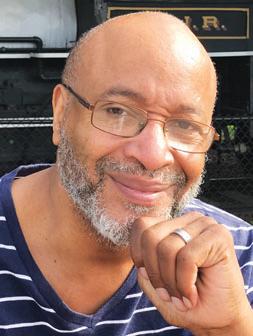 By: W.D. Foster-Graham Book Review Editor
By: W.D. Foster-Graham Book Review Editor

DADDY, CAN YOU HEAR
ME?
By Thomas Davison
When I was growing up, the children’s books I read had an absence of BIPOC characters. It could have been a representation of the times and more rigid gender roles, but male writers were underrepresented here as well. Here in 2023, I give a hat tip to the amazing Black men who have written books in this genre, men like Anthony Walsh, J. Darnell Johnson,

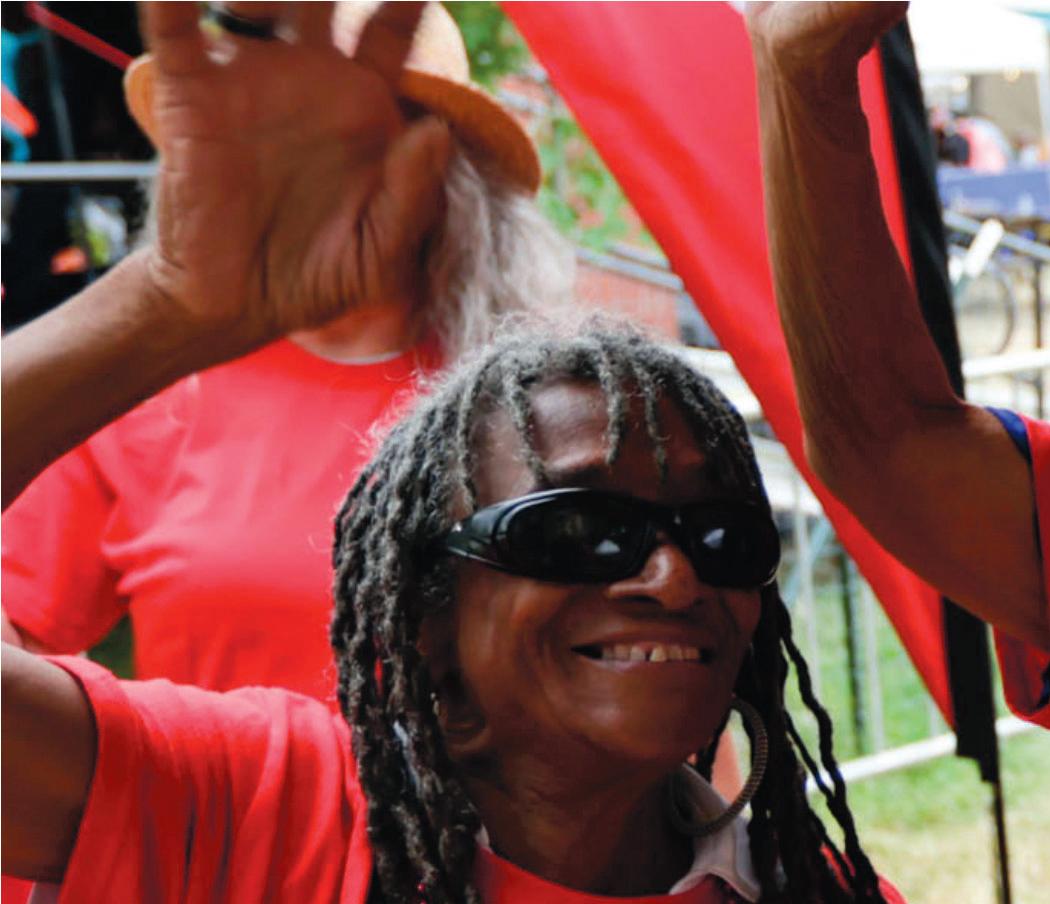

Daddy, Can You Hear Me is told in alternating points of view, first from the thoughts and feelings of the child and then those of the father who is absent. This book speaks so beautifully to children whose fathers, for whatever reason, are absent, such as incarceration or on a tour of active military duty. Though the children and their fathers illustrated come from a diversity of ethnicities, the feelings expressed are universal.
As a father myself, I recognize in this book that what children remember the most are not the material things such as

presents, but the quality of the time you spend with them and how they feel when you’re with them. The child’s POV shares memories of Dad and dreams of what could be. The father’s POV speaks words of unconditional love; though he isn’t physically present, his children are always in his heart. Looking back on my own childhood, having a father who was a career military officer, the words in Davison’s book ring true.
Daddy, Can You Hear Me is available through Amazon, Barnes & Noble, and Ultimate Joy Publications. Thank you, Thomas and Samuel, for the love and inspiration you put into this work, and may it have a place in the libraries of many, many families.
nothing quite like local.

For nearly two decades, our Student Leaders® program has helped prepare community-minded high school students to become successful in the workforce by connecting them to skills development, service and leadership training. Through paid internships with local nonprofits like Hennepin Theatre Trust, they gain practical work and life experiences. It’s just one more way we’re working together with our communities to build a better future for all.
Lucas Giambelluca President, Bank of America Twin Cities



